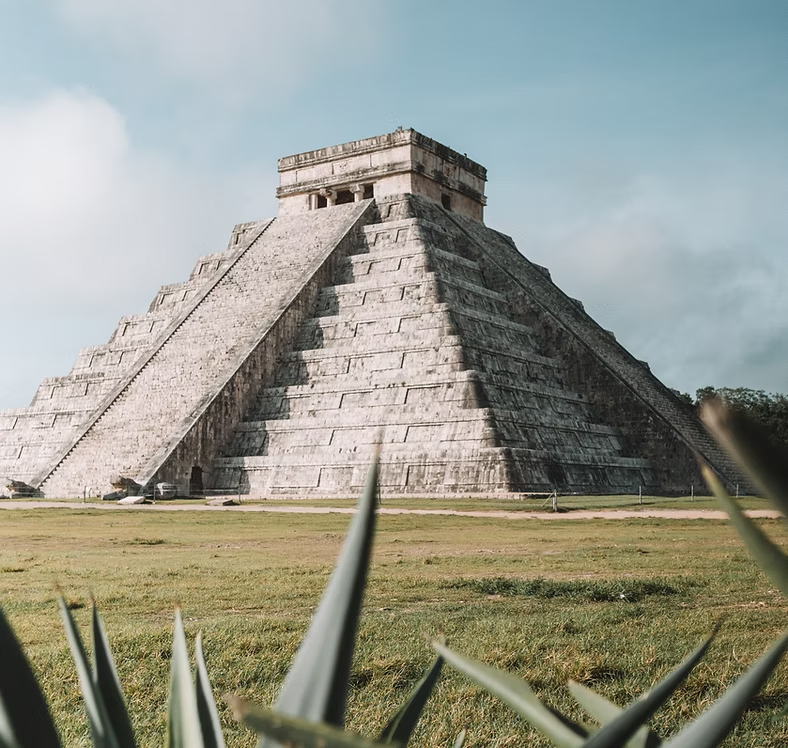
Yucatan
Explore Yucatan
Yucatan
Yucatán, Mexico: A Land of Ancient Ruins & Tropical Paradise
The Yucatán Peninsula is a stunning destination known for its Mayan ruins, crystal-clear cenotes, and white-sand beaches. Home to Chichén Itzá, vibrant colonial cities, and world-class resorts, the Yucatán offers a perfect mix of history, adventure, and relaxation. Whether you're exploring underground rivers, swimming with sea turtles, or indulging in authentic Yucatecan cuisine, the Yucatán is a must-visit destination for culture lovers, outdoor enthusiasts, and beachgoers alike.
Frequently Asked Questions: Yucatán, Mexico
The Yucatán enjoys a tropical climate year-round, but the best time to visit depends on your activities:
- November–April (Dry Season): Best for pleasant weather, beach trips, and exploring ruins.
- May–August (Hot & Humid Season): Ideal for cenote swimming, whale shark tours, and fewer crowds.
- September–October (Rainy Season): Great for budget travelers, but expect occasional storms.
- Chichén Itzá – A UNESCO World Heritage Site and one of the New Seven Wonders of the World.
- Cenote Ik Kil – A stunning open-air cenote perfect for swimming and photography.
- Uxmal – A less crowded but equally impressive Mayan archaeological site.
- Mérida – The colonial capital of Yucatán, rich in history, culture, and local cuisine.
- Valladolid – A charming town known for its pastel-colored buildings and nearby cenotes.
- Río Lagartos & Las Coloradas – Famous for its pink salt lakes and flamingo colonies.
- Ek Balam – A hidden Mayan ruin with a climbable pyramid offering panoramic views.
- Izamal – Known as “The Yellow City” with a blend of colonial and Mayan history.
- Celestún Biosphere Reserve – A protected area home to thousands of flamingos and diverse wildlife.
- Progreso Beach – A relaxing beach destination with soft sand and a long pier.
- Cochinita Pibil – A slow-roasted pork dish marinated in citrus and achiote.
- Sopa de Lima – A refreshing lime soup with shredded chicken and crispy tortilla strips.
- Panuchos & Salbutes – Fried corn tortillas topped with beans, shredded turkey, and pickled onions.
- Papadzules – A Mayan-style enchilada filled with boiled eggs and covered in pumpkin seed sauce.
- Huevos Motuleños – A breakfast dish with eggs, tortillas, beans, and plantains.
- Poc Chuc – A grilled citrus-marinated pork dish served with pickled onions.
- Marquesitas – A crispy, rolled crepe filled with Nutella, cheese, or caramel.
- Tamales Yucatecos – Banana leaf-wrapped tamales stuffed with chicken or pork.
- Tikin Xic Fish – A grilled fish dish marinated in achiote and served with tortillas.
- Fresh Agua de Chaya – A refreshing Mayan drink made from chaya leaves, similar to spinach.
- Flights: Arrive at Mérida International Airport (MID) or Cancún International Airport (CUN).
- Car Rentals: The best way to explore cenotes, ruins, and small towns at your own pace.
- ADO Buses: Comfortable long-distance buses connecting Mérida, Valladolid, Chichén Itzá, and Cancún.
- Colectivos (Shared Vans): Budget-friendly transport for short trips between towns.
- Taxis & Rideshares: Available, but agree on the price before getting in—Uber is only available in some areas.
- Biking: Great for exploring colonial towns like Valladolid and Izamal.
- For U.S. travelers: No visa required for stays under 180 days, but a valid passport is necessary.
- For international travelers: Check Mexico’s visa requirements based on your nationality.
- Tourist Card (FMM): Required upon arrival—keep it safe, as you need it to exit the country.
- Currency: Mexican Peso (MXN).
- S. dollars are accepted in some tourist areas, but pesos are preferred.
- ATMs are widely available, but use bank ATMs to avoid high fees.
- Currency exchange is best done at the airport or in major cities like Mérida and Cancún.
- Spanish is the official language.
- Mayan is spoken in some rural areas.
- English is widely understood in tourist areas, but learning basic Spanish phrases is helpful.
- Greet people with a handshake or a kiss on the cheek (among locals).
- Tipping is expected (10-15% at restaurants, and for taxi drivers and tour guides).
- When visiting Mayan ruins, respect the sacred sites and do not climb restricted structures.
- Dress modestly when visiting churches and local markets.
- Haggling is common in markets, but always be respectful.
- Restaurants: 10–15% tip is standard for good service.
- Hotels: $2–5 per bag for bellhops, $2–5 per night for housekeeping.
- Taxis & Colectivos: No tip required, but rounding up is appreciated.
- Tour Guides & Excursions: $5–$20 per person, depending on the experience.
- For peak season (December–April): Book 3–6 months in advance for hotels and tours.
- For off-season (May–October): Booking a few weeks ahead is usually fine.
- For cenote tours and Chichén Itzá visits: Arrive early to avoid crowds.
- Mexico no longer requires COVID-19 testing for entry, but check for updates before travel.
- Some cenotes and ruins require an entrance fee—bring cash.
- Hurricane season runs from June to November—monitor weather reports.
- Avoid tap water—only drink bottled or purified water.
Contact us at 281-229-0862 or admin@pointmetoparadise.com
